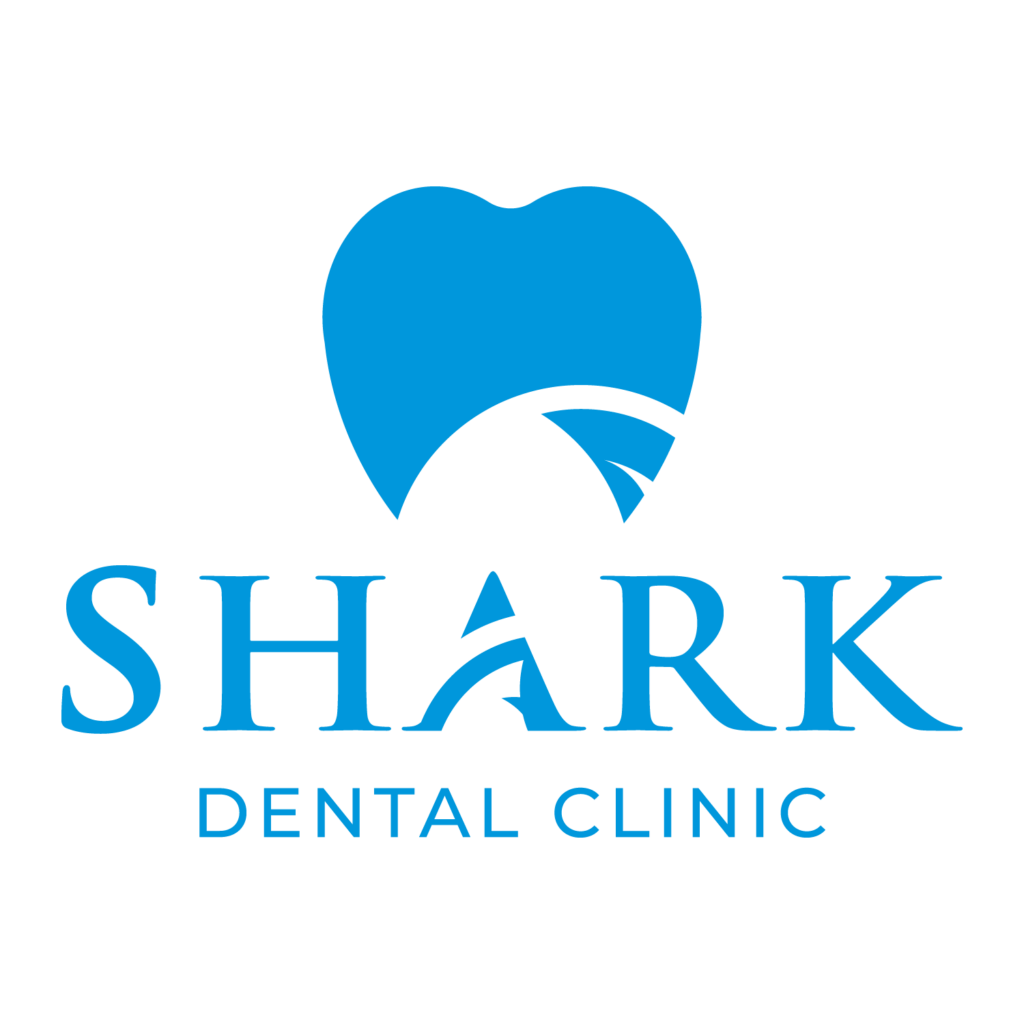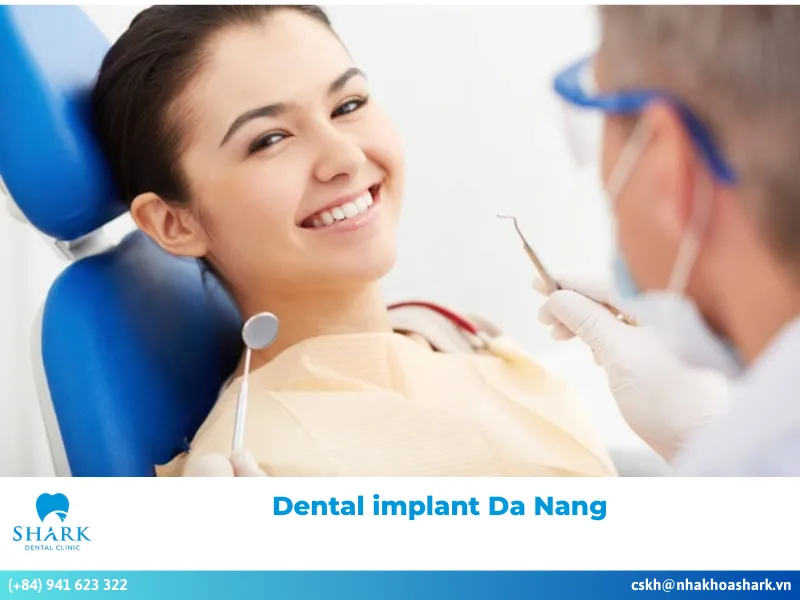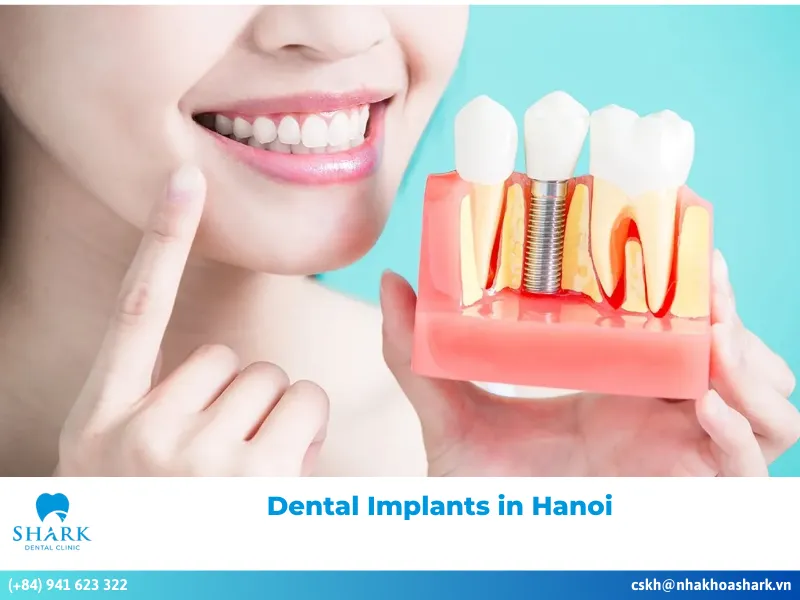Braces are a long-term orthodontic treatment that requires patients to strictly follow dietary guidelines and maintain proper oral hygiene in order to achieve the desired results. So, can you eat chocolate with braces, and what foods should or should not be eaten? Let’s explore the detailed answers together with Shark Dental Clinic in the article below!
Can you eat chocolate with braces?
Yes, you can eat chocolate while wearing braces, but it’s important to choose wisely. Opt for soft chocolate that melts easily in your mouth, has less sugar, and be sure to clean your teeth thoroughly right after eating to minimize the risk of cavities. While chocolate may be a tempting snack, it’s best for individuals with braces to limit their consumption and avoid eating it in large quantities.
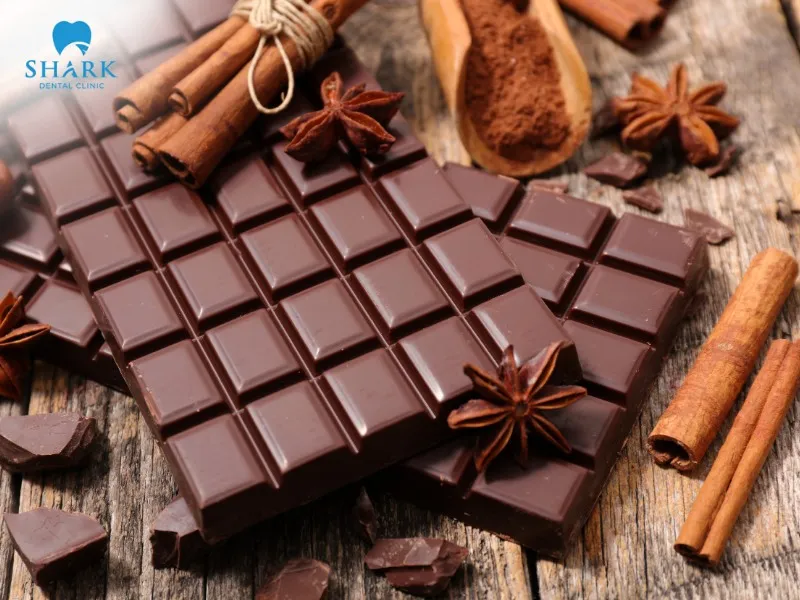
Risks of eating too much chocolate during orthodontic treatment:
- Increased risk of cavities: Chocolate is high in sugar, which serves as a food source for bacteria in the mouth. Consuming excessive amounts can erode tooth enamel, heighten the risk of tooth decay, and negatively affect the oral health of those with braces.
- Difficulty cleaning teeth: Braces consist of orthodontic appliances, such as archwires and brackets, which can make oral hygiene challenging. Sticky chocolate can become trapped in these appliances, and regular brushing may not fully remove it. Over time, this residue can lead to cavities, gingivitis, and bad breath.
- Damage to orthodontic appliances: Some types of chocolate can be hard or have toppings that require significant biting force. This might result in broken archwires or loosened brackets, which can cause mouth bleeding and disrupt the orthodontic process.
- Tooth sensitivity: Teeth tend to be more sensitive during orthodontic treatment, so consuming too many sugary foods can lead to discomfort and tooth pain. If sensitivity persists, it could significantly disrupt daily activities.
- Harm to enamel: Eating chocolate frequently can wear down enamel and negatively impact overall oral health.

In summary, individuals with braces should limit their intake of chocolate and sugary foods. These items can harm enamel, increase the risk of cavities, and interfere with daily oral hygiene. Maintaining a balanced and safe diet is essential for a smooth orthodontic process and achieving the best results.
What foods should you avoid after braces?
In addition to chocolate, those with braces should limit or avoid the following foods:
- Hard and crunchy foods: Foods like crackers, popcorn, and hard nuts require strong biting forces, which can lead to bracket detachment or broken archwires, affecting orthodontic effectiveness.
- Chewy and sticky foods: Chewy candies and gum are sweet and tasty but very sticky, and easily cling to brackets. Chewing candy or gum can cause brackets to loosen, interrupting aesthetic orthodontic progress. These candies also contain high sugar, which increases the risk of tooth decay if oral hygiene is not thorough.
- Whole and uncut foods: Whole foods such as apples, pears, and energy bars need to be bitten with front teeth, which can result in bracket detachment. It’s wise to cut these foods into smaller pieces, chew gently, and ensure thorough oral cleaning afterward.
- Carbonated and acidic beverages: Soda and acidic drinks can erode enamel and cause staining if consumed frequently. People with braces should limit these drinks as much as possible if they want an even, bright smile after treatment.
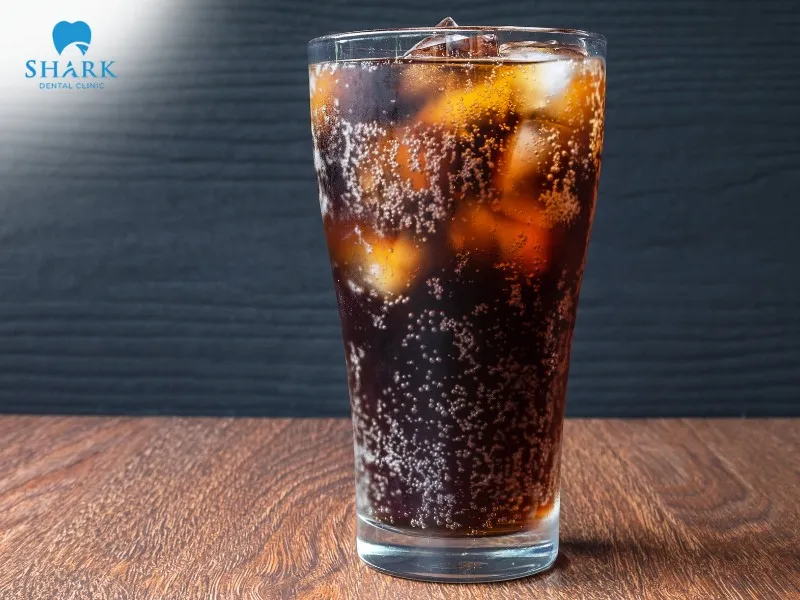
- Foods that create small debris: Snacks such as crispy chips, puffed snacks, and other bite-sized treats break into tiny fragments when chewed. These fragments can easily get stuck between teeth and brackets, making them difficult to clean with regular brushing. This creates an environment for bacteria to thrive, increasing the risk of cavities and periodontal inflammation.
>>> See more: Can you eat chips with braces?
- Seafood and tough meats: Certain seafood and chewy meats, such as grilled squid, beef jerky, and beef tendons, can put pressure on orthodontic appliances, making oral hygiene more challenging for people with braces. Therefore, orthodontic patients are advised to avoid these foods to ensure optimal treatment outcomes.
- Foods with strong coloring: Dark-colored foods like coffee, curry, turmeric, and soy sauce can stain teeth and brackets if consumed regularly. Yellow stains on the teeth are difficult to remove quickly and can negatively affect overall smile aesthetics.
- Extremely hot or cold foods: Very hot or very cold foods can increase tooth sensitivity, especially for those undergoing orthodontic treatment. Temperature extremes can cause discomfort, heighten sensitivity, and potentially loosen archwires or brackets, thereby affecting the effectiveness of the orthodontic treatment.
- Greasy and oily foods: Fast foods that are high in oil, such as pizza, fried chicken, and French fries, are not recommended for orthodontic patients. Oily foods can lead to plaque buildup, bad breath, and an increased risk of cavities.

In summary, after getting braces, you should limit or avoid hard, crunchy, chewy, sugary, acidic, or sticky foods. While these foods may be tasty and appealing, they can cause numerous complications during orthodontic treatment.
>>> See more:
What to eat when wearing braces?
When wearing braces, it’s important to choose foods that are soft and easy to chew. Here are some recommendations:
- Soft and easy-to-chew foods: Porridge, soups, and soft mashed dishes—such as mashed potatoes, tofu, and puddings—are ideal for people with braces. Their soft texture allows for easy chewing and swallowing, minimizing the risk of damaging orthodontic appliances and ensuring safety during treatment.
- Well-cooked vegetables: Choose vegetables like peas, pumpkin, broccoli, and carrots that are well-cooked to maintain their softness. These vegetables provide essential fiber, vitamins, and nutrients while being gentle on braces, which supports digestion and overall health.
- Ripe fruits: Dentists recommend soft, ripe fruits such as papaya, bananas, and ripe mangoes. These fruits are not only rich in vitamins but are also tasty, easy to eat, and do not interfere with orthodontic appliances.
- Soft protein sources: Soft, finely chopped proteins like ground chicken, slow-cooked beef, or rolled omelets are excellent options for protein intake. Many of these foods also contain calcium and vitamin D, which are beneficial for bone and dental health.
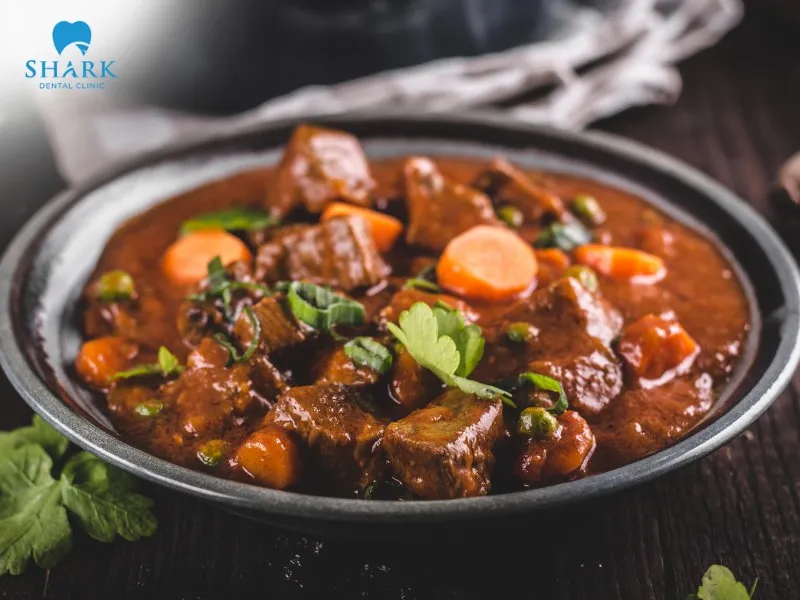
- Dairy products: Cheese, yogurt, and milk are great sources of calcium and probiotics, which support digestive health. They are soft and easy to consume, making them suitable for those with braces.
- Starches: Healthy starches like oats, pasta, vermicelli, or pho provide essential energy and nutrients that support the orthodontic process.
- Smoothies: If you don’t enjoy fresh fruits, smoothies are a great alternative. They are easy to consume, rich in vitamins and fiber, and can help reduce discomfort during orthodontic treatment. Recommended options include smoothies made with mango, banana, avocado, or papaya.
- Omega-3 rich foods: Incorporating foods rich in omega-3, such as salmon or chia seeds, can support brain and cardiovascular health. Eating a diverse, nutrient-rich diet not only boosts overall health but also helps ensure a smooth orthodontic treatment.

In conclusion, patients with braces can enjoy a variety of nutritious, soft, and tasty foods. It is important to chew gently and prioritize soft foods to avoid damaging the brackets or archwires. This article also addresses questions like “Can you eat chocolate with braces?” and suggests foods to avoid, as well as those that are suitable during orthodontic treatment. Following these guidelines will help create a healthy, balanced diet that ensures effective, safe, and comfortable orthodontic care.


